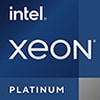Cisco HyperFlex HX-Series
This product has been identified for end of life.
Read full announcementAgile infrastructure for hybrid operations
Cisco HyperFlex allows you to modernize infrastructure from the data center to the edge, power traditional and cloud native applications, simplify DevOps enablement, and optimize operations across distributed environments.
Contact Cisco
-
-
Call Sales:
- 1-800-553-6387
- US/CAN | 5am-5pm PT
Features
Multisite edge deployments
Cisco HyperFlex Edge can be deployed at any distributed scale with the Cisco Intersight cloud-based management platform.
Multicloud services
Enable any application tier to be deployed, monitored, and managed anywhere.
All NVMe flash optimized
The HX220c M5 All NVMe node solution powers latency-sensitive enterprise apps with higher consistent IOPS and lower latency.
Multiple hypervisors
This extensible file system supports multiple hypervisor choices without compromising performance.
Cisco HyperFlex engineered on Cisco UCS
Cisco HyperFlex offers a variety of flexible hyperconverged infrastructure configurations engineered on the Cisco UCS platform. Explore the latest M5 and M6 data center and edge nodes for your specific business needs.
Cisco HyperFlex Hybrid Nodes
For general-purpose workloads
Cisco HyperFlex All Flash and All NVMe Nodes
For mission-critical workloads
Cisco HyperFlex Edge
For remote and branch offices
Cisco+ Hybrid Cloud
Optimize workloads across a hybrid cloud for superior performance and great value, with flexible consumption for your on-premises infrastructure.
The cloud operations platform you’ve been waiting for.
Manage your whole IT environment, from anywhere - with Cisco Intersight.
Intel Select Solutions from Cisco
Cisco HyperFlex All Flash and All NVMe are Intel Select Solutions. Predefined, workload-optimized solutions to reduce the challenges of infrastructure evaluation with a combination of Intel data center compute, memory, storage, and network technologies.
HyperFlex HX Data Platform and Cisco Intersight
HX Data Platform
Learn about the platform's architecture and software-defined storage approach to HCI.
Cisco Intersight
Intelligent visualization, optimization, and orchestration bring your teams, tools, infrastructure, and apps together.
Watch your favorite cloud and data center videos
Get the latest updates on data center and cloud technology, upcoming features, and more.
Recommended resources
Additional resources
Technical resources
For partners
Are you a Cisco partner? Log in to see additional resources.
Looking for a solution from a Cisco partner? Connect with our partner ecosystem.
Customer reviews
Reviews at Gartner
Read Gartner Peer Insights reviews on Cisco Hyperconverged Infrastructure.
Reviews at TrustRadius
 Cisco UCS systems with Intel® Xeon® Platinum processor
Cisco UCS systems with Intel® Xeon® Platinum processor
Intel, the Intel logo, the Intel Inside logo and Xeon are trademarks of Intel Corporation or its subsidiaries.